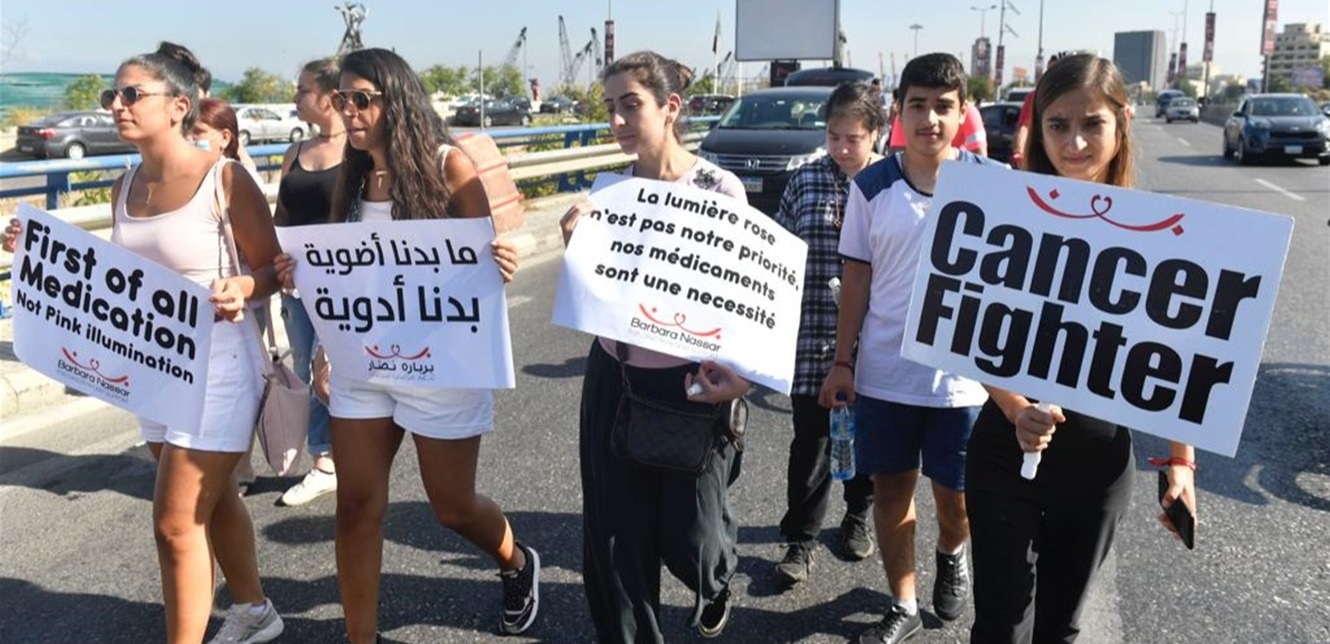However, these numbers are still very dangerous, and have a terrible impact on many residents, male and female, who cannot access medicine, due to a decline in their income and as resulting in the widespread estimates of a doubling of the cancer population. issues and an increase in the risk of contracting it as a direct result of the increase in air pollution due to the release of electricity generators after the electricity crisis, as well as a deterioration in public safety and sanitary conditions with hardships in consumption public on the environment, waste treatment, health, and everything related to social issues and human development for the residents of Lebanon.
Air pollution is one of the most prominent factors contributing to the increase in cancer cases in Lebanon, especially lung cancer, which accounts for 12% of all cases (and the second -only for breast cancer), and is the first cause of death from this. infection at a rate of 19.3%.
Representative Najat Saliba, executive director of the Academy of the Environment at the American University and supervisor of a study prepared by the American University of Beirut, says that air pollution in Beirut due to the release of private electricity generators has doubled from 23% to between 46% and 50% between 2017 and 2023.
Since the beginning of the economic crisis in Lebanon in 2019, and the reduction in production from the Electricité du Liban to a few hours a day, reliance on private generators that work on diesel has increased as a major and not is the only source of electricity. According to Lebanese customs figures, between 2019 and 2023, Lebanon imported electric generators worth 83 million US dollars, and the import value of generators increased from 8 million dollars in 2020 to 21 million in 2023.
It should be noted that the import of generators whose capacity does not exceed 75 KVA increased significantly, from 6,772 generators to 14,548 generators between 2019 and 2023, noting that the highest was recorded in the year 2022, which saw the liberalization of energy prices and higher rationing. , and Lebanon imported at that time about 18,411 generators of this size.
There is a worrying trend regarding the increase in cancer cases, not only in Lebanon but also in the world. According to the estimates of the World Health Organization, about 20 million new cancer cases and about 9.7 million deaths were registered in the year 2022, and it is expected that more than 35 million new cancer cases will be registered in the year 2050 , a 77% increase. over the year 2022. Cancer incidence rates reflect how people are exposed to There are risk factors, many of which are linked to social and economic development, and according to the World Health Organization, air pollution represents a major influential environmental risk factor.
The Lebanese Ministry of Health has stopped updating and publishing its data on cancer rates in Lebanon since 2016. However, sources from the Ministry indicated that around 19 million dollars have been allocated in 2022 to import medicines for cancer patients, which is an average of 560 dollars per patient (if we assume that the number is the same as those studied by the World Health Organization), while the study of the financial burden of cancer treatment in Lebanon issued in 2016 shows that the average cost of treating one case of lung cancer per year is around $5,260, which is more than 9 times what the Ministry of Health provides the -currently It is more than twice the minimum annual wage in Lebanon.
However, the economic burdens due to the increasing number of cancer patients go beyond the issue of medical bills and even hospital bills, although they are still the most most important and fundamental. In practice, cancer takes on a wider economic dimension that includes increased poverty, loss of income sources, and declining productivity. The dangerous reality of cancer in Lebanon is reflected in the increase in cases of infection among young people and adolescents, who are an important part of the workforce in the economy, according to the testimonies of many cancer doctors.
Although it is known that the risk of developing cancer increases with age, as in Lebanon, the estimates of the World Health Organization indicate that the risk of developing cancer before the age of 75 years reached 17.3% in the year 2022. Although this percentage is still lower than the world average (20% However, the risk of dying from cancer before the age of 75 years is about 9.7%, higher than the world average (9.6%) , which shows the level of the ability to face and fight this disease, which is gradually declining due to the high cost of treatment and a decline in the value of wages due to the lack of almost overall public policies and a decline in social security coverage. (zero platform)
2024-05-05 18:00:06
#Horrible #statistics #cancer #Lebanon #worrying #data

